
All categories
Featured selections
Trade Assurance
Buyer Central
Help Center
Get the app
Become a supplier

(1818 products available)
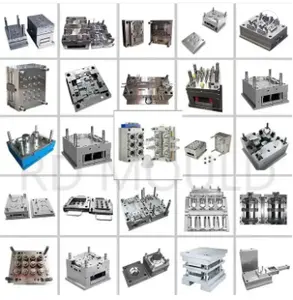












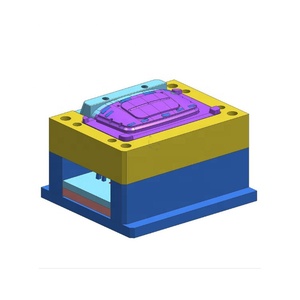

















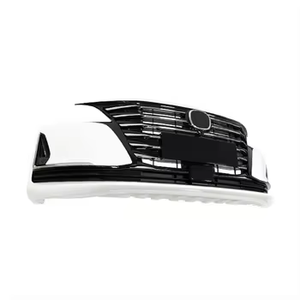
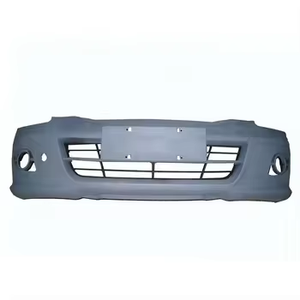
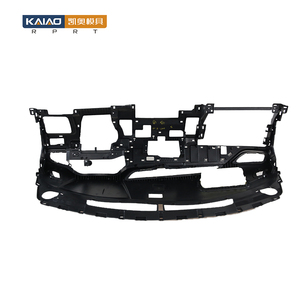





The production of bumper moulds employs diverse and durable materials. These materials are selected based on the functional requirements and desired longevity of the moulds.
Steel alloys are frequently used in bumper mould making. This is due to their exceptional strength and durability. Usually, steel mixtures are utilized in the production of bumper moulds. This is because they offer resistance to deformation. Consequently, making them suitable for high-precision applications.
Typically, steel moulds come with the capability to produce numerous parts with a high degree of accuracy. This factor makes them ideal for industries that require consistency in product quality. Additionally, steel moulds can be treated to resist corrosion. This enhances their lifespan and reduces the need for frequent replacements.
Aluminum alloys are used in bumper mould making due to their lightweight and resistance to corrosion properties. Usually, aluminium provides easier handling and quicker CNC router machine installation. This makes it an ideal choice for short production runs or projects that require frequent mould changes. Also, aluminium's superior thermal conductivity enables efficient heat transfer during the molding process. This aids in the uniform solidification of the material.
Incorporating metal alloys in bumper mould making combines strengths from multiple metals. Usually, these alloys are tailored for specific applications. This is done by incorporating properties such as improved tensile strength and high resistance to wear. Commonly, metal alloy moulds are used in high-volume production settings. This is where longevity and performance directly impact profitability.
High-temperature environments in bumper moulds require materials that can withstand significant heat. Conventionally, temperature-resistant steel, such as H13 or S7 alloys, is essential for this purpose. Moreover, these steels maintain their structural integrity even under prolonged exposure to high temperatures. Usually, this makes them ideal for processes that involve heated substrates. Therefore, as a result of their enhanced durability, these materials are commonly used in bumper moulds.
Chrome-plated steel moulds are recognized for their rigidity and aesthetic finish. Usually, the chrome plating not only enhances the mould's surface appearance but also provides a robust, wear-resistant exterior. Ideologically, this makes them suitable for projects where both durability and visual appeal are critical. Nonetheless, the additional protection against abrasion extends mould life. Hence, reducing the frequency of maintenance required in production environments.
Bumper mould making is utilized for a gamut of applications. It generates diverse bumper designs and development of superior-quality moulds for automobile bumpers.
The automotive industry relies on strong bumper moulds to produce automotive bumpers in bulk. This process ensures consistency in shape and dimensions. Hence, making vehicle safety standards easier to comply and reinforcing structural integrity. Depending on design complexity, these moulds facilitate the integration of advanced features. Such as sensor housing and aerodynamic elements. This results in practical transportation and vehicles that are visually appealing.
Bumper moulds are indispensable for effective vehicle maintenance and repairs. Ideally, as vehicles age, parts require replacement or repair; these moulds ensure that original design specifications are met. This preserves the bumper's functionality. Also, frequent use of these precise moulds aids in reducing manufacturing tolerances. Such a practice minimises the likelihood of erroneous installations. Therefore, this leads to improved vehicle performance and potentially lower repair costs over time.
Bumper moulds play an important role in upholding safety features in automobiles. Usually, moulds are designed to meet safety standards and crash test requirements. This ensures that bumpers absorb impact energy and safeguard passengers.
Also, moulds are used to create customised bumpers with integrated safety features. These features may include energy absorption zones. Thus, this ensures vehicles remain compliant with evolving regulatory benchmarks. This reduces the need for redesigns or recalls. Hence, granting manufacturers peace of mind in their commitment to safety.
Certainly, Bumper moulds are fundamental in the production of custom vehicles and modifications. These moulds offer car enthusiasts and businesses the flexibility to create unique bumper designs that reflect personalisation and branding. This practice enhances aesthetic appeal and incorporates better functionality. Therefore, custom bumpers improve aerodynamics or provide additional protection.
Henceforth, such adaptability allows for a wide array of applications. Ranging from aftermarket upgrades to bespoke builds. Therefore, this innovation will impact both automotive culture and business profitability positively.
Mould retrofitting makes use of bumper moulds to accommodate contemporary bumper designs. This is applicable when older vehicle models are brought for refurbishment. Usually, it allows for the integration of newer technology. Nevertheless, retrofitting moulds are designed with flexibility and adaptability in mind. Therefore, making it possible to produce bumpers that conform to updated safety regulations and standards without incurring exorbitant costs.
This ensures that vehicles maintain regulatory compliance and benefit from modernised components.
Bumper mould making bears various functions, features, and designs. Also, it offers endless possibilities for creative and practical applications.
Bumper moulds are developed to produce consistent and accurate bumper shapes. This is essential for multiple bumpers, regardless of the variant used. Normally, these moulds facilitate the mass production of automotive bumpers, resulting in shortened production time and reduced costs.
Also, these moulds have a paramount role in customisation. Even so, they allow for the creation of unique bumper designs that address specific market requirements. This incorporates brand identity or enhanced functionality. Also, Bumper moulds usually ensure that all produced bumpers meet safety and regulatory requirements.
Creations of Custom Bumpers
Bumper moulds offer the flexibility to create custom bumpers that cater to specific design preferences. Standardly, this allows car owners to personalise their vehicles. This reflects their style and needs. Thus, whether it's a sporty look or enhanced off-road capability, customised bumpers meet varied requirements.
Enhanced Aerodynamic
Majorly, modern bumper moulds are developed to improve vehicle aerodynamics. Therefore, well-designed bumpers standardly reduce drag and improve airflow around the car. Hence, this contributes to better fuel efficiency and enhanced overall performance. This is particularly essential for electric vehicles, where every bit of efficiency counts.
Durability and Material Compatibility
To increase bumper lifespan, Bumper stickers are designed using sturdy and durable materials. Conventionally, materials such as thermoplastics or fibreglass are used. Normally, these materials resist weather elements. Therefore, they provide a sturdy barrier against minor collisions, safeguarding critical vehicle components.
Quick Replacement and Cost-Effectiveness
Typically, one of the key advantages of bumper moulds is the ease with which new bumpers can be produced. More often than not, this makes replacement processes quicker and cheaper. Therefore, if a bumper is damaged, a new one can be produced in no time. Moreover, this minimizes downtime and ensures vehicles remain in prime condition.
Eco-Friendly Production
Today’s bumper mould making techniques support eco-friendly practices. Mostly, the moulds are constructed using recyclable materials. This aids in reducing waste in the long run. Also, new technologies in bumper moulding, such as 3D printing, contribute to lower material waste. Therefore, this makes it an environmentally conscious choice.
Bumper moulds are formed with design flexibility. Normally, they accommodate a range of styles. These styles include those that are aggressive, sleek, and many more. Therefore, manufacturers would be given freedom to explore innovative designs that align with current trends.
Depending on the advances in technology, bumper moulds are created through advanced manufacturing techniques. This includes 3D printing and injection moulding. These methods promote precision and quick production. Also, this design process allows for rapid prototyping. This provides room for adjustments to be made based on performance data or customer feedback before mass production.
The selection of bumper mould making depends on several factors. These factors include adjustments, efficiency, and expenses.
Typically, the first consideration is the type of bumper. Therefore, is making selection based on the type of bumper that requires the mould. For instance, a professional service would deliver an OEM replica mould for a stocks vehicle. On the other hand, a custom mould would be created for unique designs like off-road or sport bumpers.
Bumper materials are such diverse beings. Usually, they include plastics, metal, and composites. Therefore, the choice of material depends on the vehicle’s purpose. For heavy usage, sturdy material like steel would be ideal. However, plastics are suitable for light urban vehicles.
This is another crucial aspect to consider. Normally, the design of the mould is defined by the type of bumper intended to form. Usually, a CNC milling machine provides more precision and design freedom. This feature is to say it can create complex designs like integrated lights or frenched plates. Nevertheless, simpler moulds are more practical for basic bumper shapes.
The budget literally has risks. Normally, premium materials and complex designs offer boost-quality outcomes. Nonetheless, they also come with costs. Thus, when operating on a tight budget, it is imperative to stick to basic essentials. This approach will still offer satisfactory results when combined with competent workmanship.
Allowable time has to be considered when choosing a bumper mould. Usually, more complex moulds take a longer time to produce. In contrast, simpler moulds take a shorter time. Therefore, it is necessary to make a selection based on the timeframe required.
A1. Ideally, a bumper mould is designed for shaping and producing bumpers. Usually, it ensures precision and consistency during the manufacturing process.
A2.Most often, bumper moulds are made of thermoplastics like ABS and polypropylene. Sometimes, metals such as steel or aluminium are also used for durability.
A3.Incorporated material has to be well preserved. Normally, the moulding process significantly impacts quality by ensuring uniformity. Ideally, this enhances the performance and appearance of the bumper.
A4.Sturdy bumper moulds usually ensure longer lifespan. More often than not, they resist wear and tear. Recently, this minimises the need for frequent replacements. Therefore, it makes the process costly.
A5.Being flexible and adaptive, bumper moulds can be customised. Also, they can accommodate unique designs and specifications.